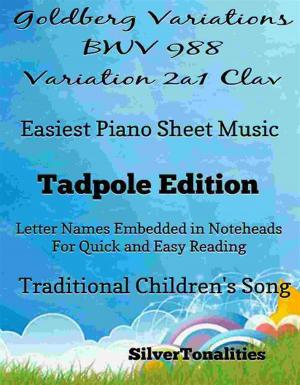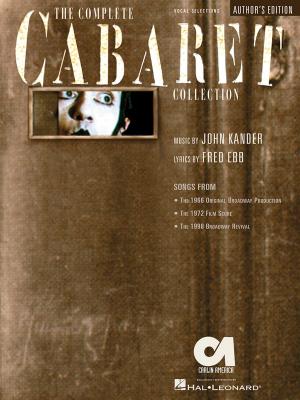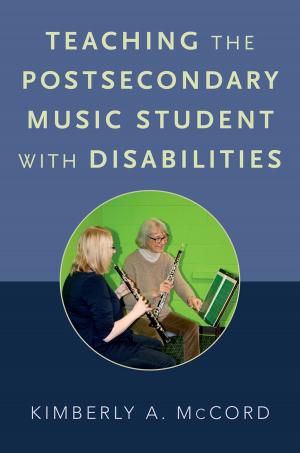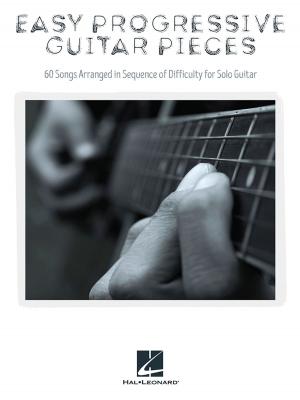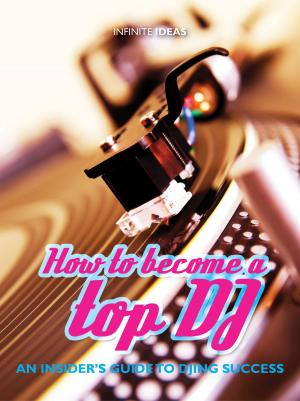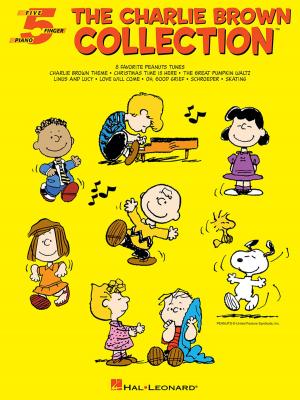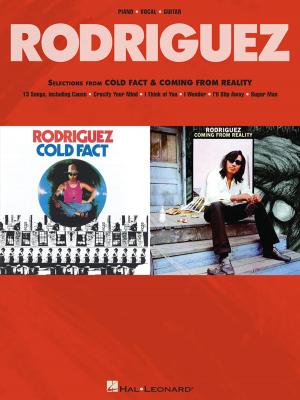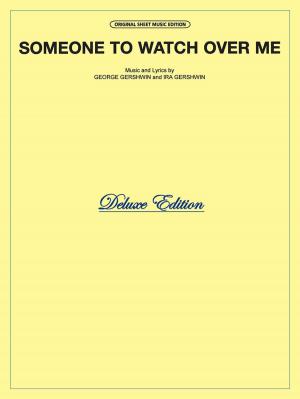300 Years at the Keyboard 2nd edition
A piano sourcebook from Bach to the moderns
Nonfiction, Entertainment, Music, Theory & Criticism, Appreciation, Songbooks, Musical Scores, Instruments & Instruction| Author: | Patricia Fallows-Hammond | ISBN: | 9780894960895 |
| Publisher: | Franz Ross | Publication: | November 8, 2010 |
| Imprint: | Language: | English |
| Author: | Patricia Fallows-Hammond |
| ISBN: | 9780894960895 |
| Publisher: | Franz Ross |
| Publication: | November 8, 2010 |
| Imprint: | |
| Language: | English |
300 Years at the Keyboard has a very long list of excellent reviews,
PUBLISHER COMMENTS: This book has been very well received. Music teachers throughout North America - over 130 schools - have adopted the title for their classes.
AUTHOR COMMENTS/DESCRIPTION:
You may ask: Who is this book made for? - Here is the answer from the author:
"We all know that teachers invest a great deal of time and money in encouraging and training a student. There is a very critical moment in a student's life that comes just after they learn how to read and play music. At that point, in order to keep the student enthusiastic about keyboard music, the student needs to be introduced to the works of great composers. If their interest is not developed, they will wander off to another hobby and the time and money invested in them will be lost.
In short, the student needs to be presented with an overview of the great composers and the beauty of their legacy. I have found by trial and error that a book that tries to be all-inclusive does not work. A huge work of all the composers that have ever lived simply overwhelms the student. They don't know where to begin, it looks like too much work, and they quickly lose interest in what you have presented.
After many years of study and experimentation, I have found the right mixture and it is 300 Years at the Keyboard. This title presents sketches of seventeen of the greatest composers spanning the three centuries that the keyboard has been around. For each composer my title gives a brief historical sketch, discussion of some of his greatest works, sample sheet music, and then a list of the major works so the student can instantly find more material if they like the composer. For a new to intermediate student, this is the perfect work for getting to know the great composers and for the seasoned professional, this is a very delightful and enjoyable review of what is available."
Choice Magazine (a major library review magazine):
"After an introductory section on the history of the piano, particularly as reflected in and influenced by works of the major composers for the instrument, this interesting and informative book describes various compositional "schools," from Austro-German, French, and Italian through English, American, Russian, Spanish, Japanese, and others. This section constitutes a brief course in music history beginning with the Renaissance. … The body of the work consists of historical and stylistic sketches of 17 composers, with brief remarks about several works of each, and lists of selected works, ending with a complete work or movement. These sketches are exceptionally well written, assuming an intelligent reader, and convey a great deal of information concisely.... this book contains much well-organized and useful material. For libraries serving serious amateur pianists, high school upward.
******************
Booklist (The book review magazine of the American Library Association):
This authoritative volume will make a solid addition to the public library music collection. After offering a brief opening chapter on the evolution of the piano as instrument and the changing styles of technique, author Pat Hammond provides opinionated but well-reasoned analyses of the works of the major piano composers, with focus on the Baroque era (Bach and Handel), the Classical age (Haydn, Mozart Beethoven), Romanticism (Schubert, Chopin Liszt, and others), Impressionism (Debussy) and Modernism (Bartok). This book's unique feature is its inclusion of musical examples of each composer's work, which are meant to be played as one reads along. Pertinent biographical material is also featured for the great masters. Appendixes include a suggested twentieth-century piano repertoire and a bibliography. Piano music - Bibliography!
*******************
Clavier Magazine
“Compiled and annotated by Patricia Fallows-Hammond. Suitable as a reference source, this handbook supplies concise biographical and stylistic sketches of composers and annotation of selected compositions. … Fallows-Hammond has a knack for setting and maintaining an appropriate level of sophistication. Writing in a crisp, direct style, she steers the student toward complicated subjects and gives them a palpable hold on them. To explain the concept of the concerto grosso, for example, she explains that, "In Handel's time, Concerto Crosso meant a small group of instruments playing in contrast to a larger body of strings." Her synopsis of the development of sonata form is equally apt....Commentary on the composers is well-researched and written at a uniform level of detail that will make it useful to a wide audience....Fallows-Hammond does a good job of compiling accurate information on the composers she has chosen. If the contents of the book serve your purposes, you will find this handbook a handy reference source. ”
****************
The American Organist
"The author has created a self-instruction course which gives information about the evolution of the piano and changing styles in piano technique, and then discusses topics with emphasis on special composers: ….. Piano students seeking background information will profit from this book. Recommended for public libraries."
********************
Keyboard Magazine
"Patricia Fallow-Hammond’s 302 page study embraces the proposition that historical context is an important, and frequently neglected, element in building an understanding of classical repertoire. …. she has assembled a fairly basic catalogue of keyboard works, arranged chronologically by composer, and preceded each list with a short biography relating milestones from each composer’s life. ....... Her decision to further enlighten the reader with short samples of their handiwork is a happy extra addition. Her efficiency at summarizing and packaging that line is what makes her debut in print a success."
Table of Contents:
1 From the Beginning 1
Evolution of the Piano 1
Changing Styles in Piano Technique 2
2 The Baroque Era 5
Johann Sebastian Bach 7
George Frideric Handel 18
3 The Classical Age of Sonata Form 29
Franz Joseph Haydn 32
Wolfgang Amadeo Mozart 47
Ludwig van Beethoven 63
4 Romanticism 81
Franz Peter Schubert 83
Felix Mendelssohn-Bartholdy 101
Robert Schumann 114
Frédéric François Chopin 128
Franz Liszt 143
Johannes Brahms 160
5 Unique Contributions 173
César Franck 174
Peter Ilyich Tchaikovsky 187
Edvard Hagerup Grieg 201
Edward Alexander MacDowell 215
6 Impressionism 227
Achille-Claude Debussy 229
7 Modernism and Contemporary Trends 245
Béla BartÓk 248
8 Schools 261
Austro-German School 261
French School 262
Italian School 265
English School 266
American School 268
Russian School 271
Spanish School 273
Japanese School 275
Other Schools 276
9 Encore 279
Composers, Teachers, Virtuosos: A Brief Encounter 279
Modern International Exchange 281
Appendices 283
Suggested 20th Century Piano Repertoire 283
A Partial List of 20th Century Harpsichord Music 287
Suggested Editions 289
Bibliography 289
Index 291
300 Years at the Keyboard has a very long list of excellent reviews,
PUBLISHER COMMENTS: This book has been very well received. Music teachers throughout North America - over 130 schools - have adopted the title for their classes.
AUTHOR COMMENTS/DESCRIPTION:
You may ask: Who is this book made for? - Here is the answer from the author:
"We all know that teachers invest a great deal of time and money in encouraging and training a student. There is a very critical moment in a student's life that comes just after they learn how to read and play music. At that point, in order to keep the student enthusiastic about keyboard music, the student needs to be introduced to the works of great composers. If their interest is not developed, they will wander off to another hobby and the time and money invested in them will be lost.
In short, the student needs to be presented with an overview of the great composers and the beauty of their legacy. I have found by trial and error that a book that tries to be all-inclusive does not work. A huge work of all the composers that have ever lived simply overwhelms the student. They don't know where to begin, it looks like too much work, and they quickly lose interest in what you have presented.
After many years of study and experimentation, I have found the right mixture and it is 300 Years at the Keyboard. This title presents sketches of seventeen of the greatest composers spanning the three centuries that the keyboard has been around. For each composer my title gives a brief historical sketch, discussion of some of his greatest works, sample sheet music, and then a list of the major works so the student can instantly find more material if they like the composer. For a new to intermediate student, this is the perfect work for getting to know the great composers and for the seasoned professional, this is a very delightful and enjoyable review of what is available."
Choice Magazine (a major library review magazine):
"After an introductory section on the history of the piano, particularly as reflected in and influenced by works of the major composers for the instrument, this interesting and informative book describes various compositional "schools," from Austro-German, French, and Italian through English, American, Russian, Spanish, Japanese, and others. This section constitutes a brief course in music history beginning with the Renaissance. … The body of the work consists of historical and stylistic sketches of 17 composers, with brief remarks about several works of each, and lists of selected works, ending with a complete work or movement. These sketches are exceptionally well written, assuming an intelligent reader, and convey a great deal of information concisely.... this book contains much well-organized and useful material. For libraries serving serious amateur pianists, high school upward.
******************
Booklist (The book review magazine of the American Library Association):
This authoritative volume will make a solid addition to the public library music collection. After offering a brief opening chapter on the evolution of the piano as instrument and the changing styles of technique, author Pat Hammond provides opinionated but well-reasoned analyses of the works of the major piano composers, with focus on the Baroque era (Bach and Handel), the Classical age (Haydn, Mozart Beethoven), Romanticism (Schubert, Chopin Liszt, and others), Impressionism (Debussy) and Modernism (Bartok). This book's unique feature is its inclusion of musical examples of each composer's work, which are meant to be played as one reads along. Pertinent biographical material is also featured for the great masters. Appendixes include a suggested twentieth-century piano repertoire and a bibliography. Piano music - Bibliography!
*******************
Clavier Magazine
“Compiled and annotated by Patricia Fallows-Hammond. Suitable as a reference source, this handbook supplies concise biographical and stylistic sketches of composers and annotation of selected compositions. … Fallows-Hammond has a knack for setting and maintaining an appropriate level of sophistication. Writing in a crisp, direct style, she steers the student toward complicated subjects and gives them a palpable hold on them. To explain the concept of the concerto grosso, for example, she explains that, "In Handel's time, Concerto Crosso meant a small group of instruments playing in contrast to a larger body of strings." Her synopsis of the development of sonata form is equally apt....Commentary on the composers is well-researched and written at a uniform level of detail that will make it useful to a wide audience....Fallows-Hammond does a good job of compiling accurate information on the composers she has chosen. If the contents of the book serve your purposes, you will find this handbook a handy reference source. ”
****************
The American Organist
"The author has created a self-instruction course which gives information about the evolution of the piano and changing styles in piano technique, and then discusses topics with emphasis on special composers: ….. Piano students seeking background information will profit from this book. Recommended for public libraries."
********************
Keyboard Magazine
"Patricia Fallow-Hammond’s 302 page study embraces the proposition that historical context is an important, and frequently neglected, element in building an understanding of classical repertoire. …. she has assembled a fairly basic catalogue of keyboard works, arranged chronologically by composer, and preceded each list with a short biography relating milestones from each composer’s life. ....... Her decision to further enlighten the reader with short samples of their handiwork is a happy extra addition. Her efficiency at summarizing and packaging that line is what makes her debut in print a success."
Table of Contents:
1 From the Beginning 1
Evolution of the Piano 1
Changing Styles in Piano Technique 2
2 The Baroque Era 5
Johann Sebastian Bach 7
George Frideric Handel 18
3 The Classical Age of Sonata Form 29
Franz Joseph Haydn 32
Wolfgang Amadeo Mozart 47
Ludwig van Beethoven 63
4 Romanticism 81
Franz Peter Schubert 83
Felix Mendelssohn-Bartholdy 101
Robert Schumann 114
Frédéric François Chopin 128
Franz Liszt 143
Johannes Brahms 160
5 Unique Contributions 173
César Franck 174
Peter Ilyich Tchaikovsky 187
Edvard Hagerup Grieg 201
Edward Alexander MacDowell 215
6 Impressionism 227
Achille-Claude Debussy 229
7 Modernism and Contemporary Trends 245
Béla BartÓk 248
8 Schools 261
Austro-German School 261
French School 262
Italian School 265
English School 266
American School 268
Russian School 271
Spanish School 273
Japanese School 275
Other Schools 276
9 Encore 279
Composers, Teachers, Virtuosos: A Brief Encounter 279
Modern International Exchange 281
Appendices 283
Suggested 20th Century Piano Repertoire 283
A Partial List of 20th Century Harpsichord Music 287
Suggested Editions 289
Bibliography 289
Index 291

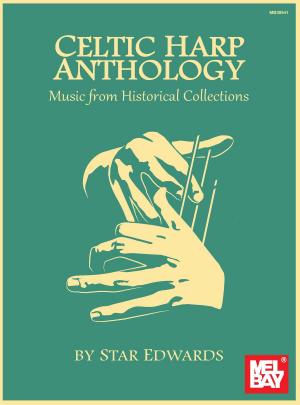
![Cover of the book Sight-Reading Samurai [Volume One: Treble Clef] by Patricia Fallows-Hammond](https://www.kuoky.com/images/2015/november/300x300/1230000815895-F8Iz_300x.jpg)
